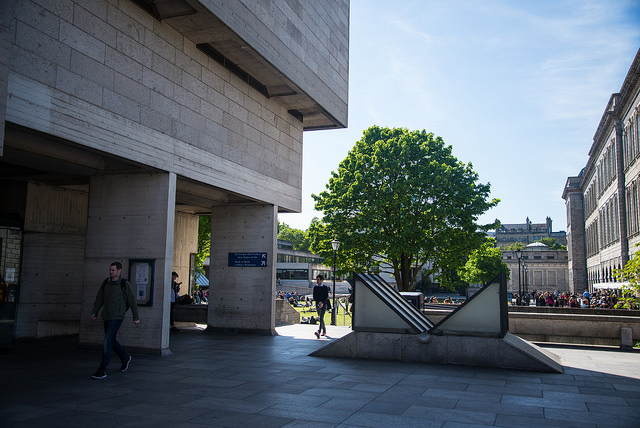Trinity will persist with plans to increase international student numbers, despite repeated worries and warnings about a campus that is quickly becoming too small to house its current student and staff population, The University Times has learned.
At a meeting of the College Finance Committee on December 18th, it was agreed that “space capacity should not be an inhibitor to further growth”.
In an email statement to The University Times, Trinity’s Chief Financial Officer Ian Mathews confirmed that regardless of persistent concerns over a lack of campus space, College would keep trying to attract more international and European students.
The number of international students in Trinity has grown considerably in recent years, currently sitting at 18 per cent of the College’s student population. Five years after the “Global Relations Strategy”, College is looking to redouble its efforts to boost the international student cohort.
However, this rise has accompanied growing concerns over space in Trinity. From senior management to students pushing for their own exclusive spaces, the issue has dominated discussions in Trinity in recent months.
Speaking to The University Times, Vice-President for Global Relations Juliette Hussey confirmed that although no specific targets have been set for the planned intake of EU and non-EU students, the next Global Relations Strategy plan will aim to further increase the number of students from outside Ireland over the next five years.
“I don’t think it will increase dramatically, we’ve had the rapid rise. But 20 per cent, 25 per cent, you could argue that that’s probably appropriate”, she said.
Such a target would be set for five-years time, as College targets new and wider markets.
However, the strategy has faced challenges and some of Trinity’s schools haven’t performed as expected.
“There was an outline of where those students could go into, bearing in mind that at the beginning of those five years, they couldn’t foretell what new programs could come onstream, how our markets might change, which did happen in particular for the visiting students. So while we’ve achieved the overall number, what was envisaged in 2014 really doesn’t reflect the way the numbers are coming through now”, Hussey said.
Hussey acknowledged that an increase in student numbers could cause issues, putting pressure on already strained facilities. However, campus is “under utilising a lot of our space”, she said.
“I think there would be certain areas where it would be more challenging [to increase student numbers due to space concerns]. In particular, the physical requirements would require an enormous investment or an alternative way of teaching or timetabling”, she said.
Hussey cited new postgraduate programmes, the loss of the Science Without Borders initiative and the need to build an international reputation for the university’s undergraduate courses as reasons for the predicted entry paths being vastly different to the current reality.
“It doesn’t really matter what way it’s happening. What was important for the university, and particularly for the financial situation, was that the overall number was met”, she said.
Across the world, universities have been luring in international students in a bid to boost funding. However, Trinity has been at pains to emphasise that students are not “cash cows”, despite a spate of non-EU undergraduate fee increases in recent years.
The issue of space has been a contentious one, with many buildings and facilities on campus experiencing overcrowding. The Arts Block, for example, was designed in the 1970s to accommodate 3,700 people but there are currently 4,500 students enrolled in the Faculty of Arts, Humanities and Social Sciences. The lack of student spaces, especially for STEM students, has also been an issue that has still not been resolved.
College is currently preparing for a €4 million refurbishment of the Arts Block, which accounts for 30 per cent of the total property in the faculty. It was revealed earlier in the year that the lecture theatres will not be included in the refurbishment, with the third and fourth floor being earmarked for development.
The renovations were put in place following a report submitted to College Board that found that only one per cent of the properties owned by the Faculty of Arts, Humanities and Social Sciences (AHSS) are in “good condition”. Over 80 per cent of the faculty’s property requires “modernisation”, while only 10 per cent is described as “operationally safe”.
Although these renovations aim to improve the Arts Block for students, there are no plans to deal with the current overcrowding. Earlier this year, The University Times revealed that Trinity staff based in the Arts Block found the building “seriously overcrowded” and “inadequate”, adding their frustrations to persistent concerns about the decades-old building.
The next Global Relations Strategy is expected to come before the Board before the end of the academic year.







